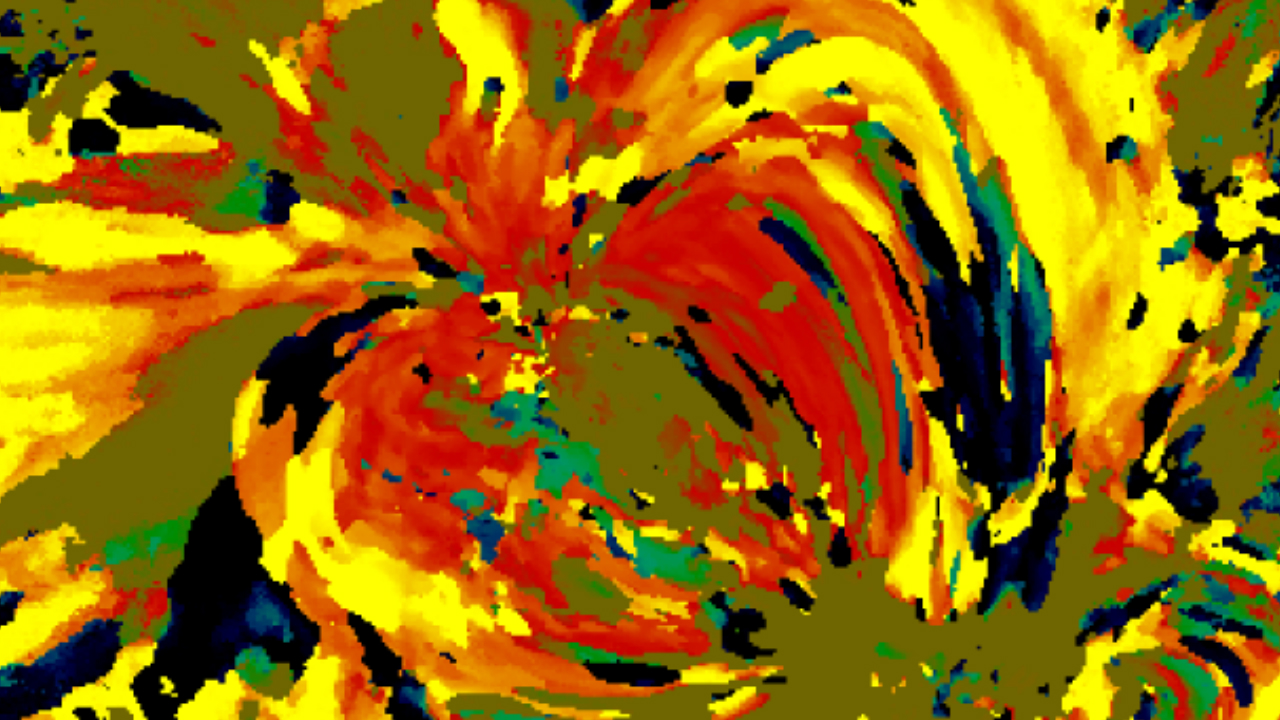Van Gogh Sun
Why is the sun's atmosphere so much hotter than its surface? To help solve this mystery, a NASA scientist recently analyzed satellite images of the sun in a way that yielded colorful strokes reminiscent of a Van Gogh painting. But this is science, not art. Each processed, color-coded image shows how material in the sun's atmosphere changed temperature over a 24-hour period. Red, yellow and orange were chosen to represent areas that cooled, while blue and green highlight areas that warmed. Watch the videos to see a gallery of these scientific works of art and learn how they were made.

Making sense of complex solar questions can create beautiful results.
While intense bouts of heating likely occurred, the dominance of reds and yellows implies an overall cooling.
Learn why each processed image takes on a slightly different appearance.

Imagery from NASA's Solar Dynamics Observatory (SDO) was used to study the bright region slightly left of center, above.

Compare this SDO image of giant coronal loops (left) to its processed counterpart (right).
For More Information
See NASA.gov
Credits
Please give credit for this item to:
NASA's Goddard Space Flight Center
-
Animator
- Scott Wiessinger (USRA)
-
Video editor
- Scott Wiessinger (USRA)
-
Narrators
- Scott Wiessinger (USRA)
- Nicholeen Viall (NASA/GSFC)
-
Producer
- Scott Wiessinger (USRA)
-
Scientist
- Nicholeen Viall (NASA/GSFC)
-
Writer
- Karen Fox (ADNET Systems, Inc.)
Release date
This page was originally published on Tuesday, August 14, 2012.
This page was last updated on Wednesday, May 3, 2023 at 1:52 PM EDT.
